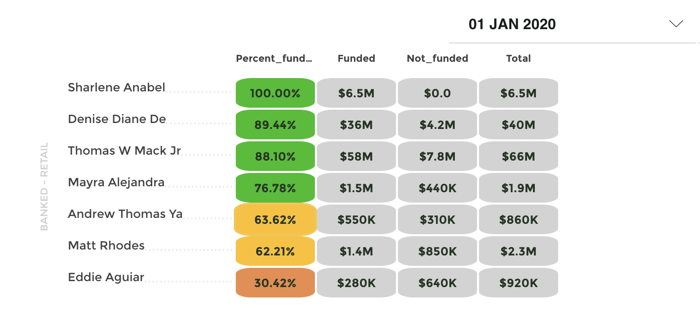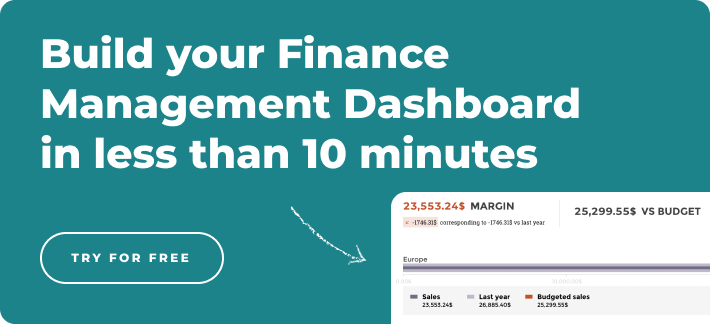Budget Variance…What is it?
A budget variance is a periodic measure that quantifies the difference between the budgeted versus actual (or “realized”) figures for a particular accounting category. Put simply, budget variance occurs when, in the accounting world, expectations do not equal reality.

When speaking about variances, you’ll often hear the term “favorable budget variance”, which is a reference to positive variances or gains that you, your company, or your team realized.
An “unfavorable budget variance”, on the other hand, will be a negative variance that indicates a loss.
Budget variances occur for a number of reasons, the most obvious of which is that when forecasting, it's virtually impossible to predict future costs, and revenue, with 100% accuracy.
There are a number of factors contributing to variance, both controllable and uncontrollable, where controllable factors include things like spend on specific line items (such as payroll, advertising etc.) while uncontrollable factors may include things such as natural disasters. But, let’s dive deeper.
What causes budget variances?
While the answer to this question will vary, a lot, depending on the context, there are a few primary culprits of budget variances:
- Errors: whether human error during budgeting periods, incorrect assumptions, or poor data entry, there are a litany of errors that can lead to variances in budget (not all of them necessarily being bad!).
- Environmental changes: we don’t mean global warming, although that could certainly cause a budget variance. No, instead we’re referring to shifts in a business landscape: economic trends that influence the cost of raw materials can lead to budget variances, and so too can changes in the competitive landscape (e.g. a new competitor sets up shop). Other environmental changes may include policy changes from the government, or even something like a change in a country’s birth rate.
- Unmet or exceeded expectations: as we mentioned, it's virtually impossible to predict, with 100% accuracy, things such as how much revenue you will generate, how many employees will quit their jobs, or how the launch of a new line of business might impact sales. While we can, and should, do our best to make informed, data-driven decisions, estimates and projections are hypothetical by nature. So, it’s no surprise that budget variance occurs frequently.
- Fraud: while not as common as the aforementioned reasons, fraud is somewhat consistently a root cause of budget variances.
- Operational changes: operational changes, whether in people management processes, equipment, or something in between, can lead to both favorable and unfavorable budget variances.
Why does budget variance matter?
Let’s first remember that there are, broadly speaking, two different types of budget variance:
- Favorable budget variance: when realized revenue exceeds the forecasted revenue, or similarly when expenses are lower than they were expected to be. This results in more positive figures around key metrics such as net profit.
- Unfavorable budget variance: when realized revenue falls short of what was originally forecasted, or expenses are higher than predicted. In this instance, income and profit are probably adversely affected.
Regardless of the type of variance that you have, it's important to investigate (and correct) them. This is especially true with large (either favorable or unfavorable) budget variances.
If you have a high favorable budget variance, you’re going to want to understand why your costs were reduced, your realized revenues exceed expectations, or why there was some mix of the two. This can inform future strategies in a positive way. Similarly, if you have a large unfavorable variance, it's vital to get to the bottom of it to make sure that you course-correct.

How to correct budget variances
Whether your budget variance is positive or negative, it's important to correct them as and when they occur.
When addressing variances, it's important to first make sure you understand the two major categories:
- Controllable variances: these are variances that are easily corrected, such as variances that are simply based on small mathematical errors or inflated expenses.
- Uncontrollable variances: these are variances that are not so easy to correct, or even identify. Examples of uncontrollable variances might include market shifts, unmet user needs, or something else entirely. Uncontrollable variances generally take a lot more analysis and, again, generally speaking, corrective action.
Ultimately, the way in which a team corrects variances is based largely on their root cause. For controllable variances, they can often be resolved by adjusting line items or expenses. Uncontrollable variances, on the other, might unfortunately be out of your hands entirely. That being said, one of the best ways to prevent budget variance is to employ a flexible budgeting model that allows you to adjust on the fly.
Guided Analytics for financial management
Tracking and optimizing key financial management metrics, like budget variance, is one of the most important factors behind driving consistent improvements (and growth), especially in the modern context.
Yet while the importance of data and analytics is widely accepted, today's finance teams often aren't getting the value they expect from their investments in analytics.
That's largely because, in our attempt to make analytics fast, powerful, all-seeing, and all-knowing, we've also made them incredibly hard to use. So complex that only experts can make something of their data.
It's vital, therefore, that analytics are made easier for business people (and finance teams). That's what we call Guided Analytics: analytics that assist users in understanding data and using that data to collaborate and drive results.
Some of the things to look for when considering guided analytics for your finance function?
- Have a map of where you need to go: implement analytics that help you understand what you're seeing and why, everywhere, always. That means context, glossaries, and easily understood interactive charts.
- Collaboration: try to enable data-driven conversations with built-in collaborative environment that can be shared anytime, and on universally on any device.
- Shareability: your reports need to be where they're needed. That means PDF reports on schedule, wall displays, embedded within your applications, and mobile on phones and tablets.



